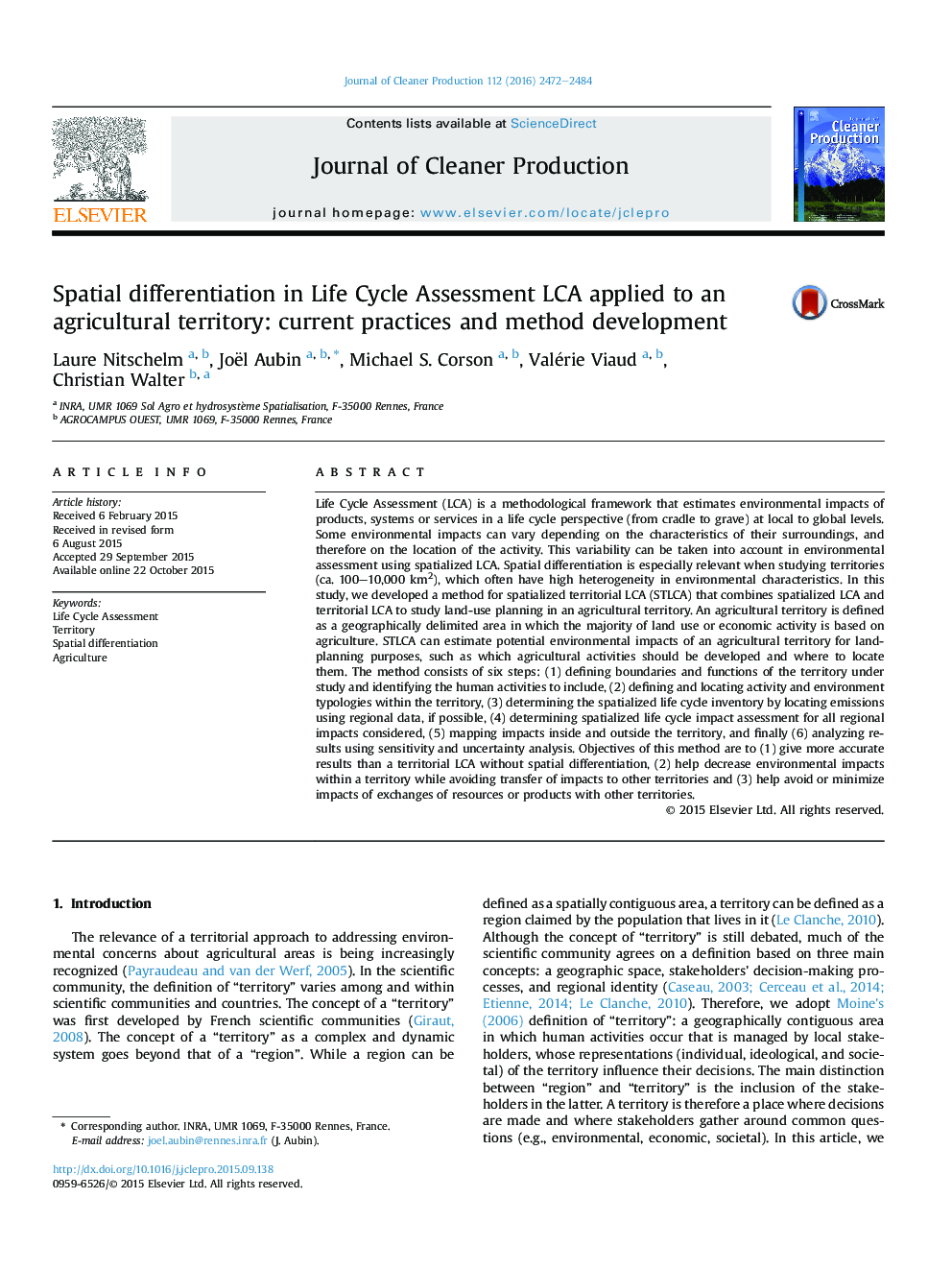| کد مقاله | کد نشریه | سال انتشار | مقاله انگلیسی | نسخه تمام متن |
|---|---|---|---|---|
| 10687836 | 1017962 | 2016 | 13 صفحه PDF | دانلود رایگان |
عنوان انگلیسی مقاله ISI
Spatial differentiation in Life Cycle Assessment LCA applied to an agricultural territory: current practices and method development
دانلود مقاله + سفارش ترجمه
دانلود مقاله ISI انگلیسی
رایگان برای ایرانیان
کلمات کلیدی
موضوعات مرتبط
مهندسی و علوم پایه
مهندسی انرژی
انرژی های تجدید پذیر، توسعه پایدار و محیط زیست
پیش نمایش صفحه اول مقاله

چکیده انگلیسی
Life Cycle Assessment (LCA) is a methodological framework that estimates environmental impacts of products, systems or services in a life cycle perspective (from cradle to grave) at local to global levels. Some environmental impacts can vary depending on the characteristics of their surroundings, and therefore on the location of the activity. This variability can be taken into account in environmental assessment using spatialized LCA. Spatial differentiation is especially relevant when studying territories (ca. 100-10,000Â km2), which often have high heterogeneity in environmental characteristics. In this study, we developed a method for spatialized territorial LCA (STLCA) that combines spatialized LCA and territorial LCA to study land-use planning in an agricultural territory. An agricultural territory is defined as a geographically delimited area in which the majority of land use or economic activity is based on agriculture. STLCA can estimate potential environmental impacts of an agricultural territory for land-planning purposes, such as which agricultural activities should be developed and where to locate them. The method consists of six steps: (1) defining boundaries and functions of the territory under study and identifying the human activities to include, (2) defining and locating activity and environment typologies within the territory, (3) determining the spatialized life cycle inventory by locating emissions using regional data, if possible, (4) determining spatialized life cycle impact assessment for all regional impacts considered, (5) mapping impacts inside and outside the territory, and finally (6) analyzing results using sensitivity and uncertainty analysis. Objectives of this method are to (1) give more accurate results than a territorial LCA without spatial differentiation, (2) help decrease environmental impacts within a territory while avoiding transfer of impacts to other territories and (3) help avoid or minimize impacts of exchanges of resources or products with other territories.
ناشر
Database: Elsevier - ScienceDirect (ساینس دایرکت)
Journal: Journal of Cleaner Production - Volume 112, Part 4, 20 January 2016, Pages 2472-2484
Journal: Journal of Cleaner Production - Volume 112, Part 4, 20 January 2016, Pages 2472-2484
نویسندگان
Laure Nitschelm, Joël Aubin, Michael S. Corson, Valérie Viaud, Christian Walter,